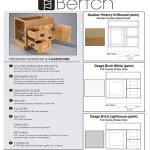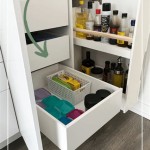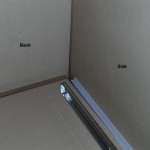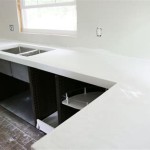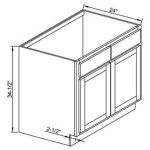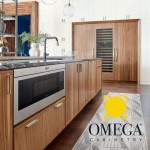Black Paint For Kitchen Cupboards: A Comprehensive Guide
Black kitchen cupboards have emerged as a significant design trend, offering a sophisticated and dramatic alternative to traditional white or wood-toned cabinetry. This stylistic choice can transform a kitchen into a modern, elegant space, but requires careful consideration of several factors to ensure a successful and aesthetically pleasing outcome. This article will explore the advantages of using black paint for kitchen cupboards, the various types of black paint available, preparation techniques, application methods, and design considerations to achieve a professional and lasting finish.
The Allure of Black Kitchen Cupboards
The appeal of black kitchen cupboards lies in their versatility and inherent ability to create a statement. Black acts as a neutral backdrop, allowing other elements within the kitchen, such as countertops, backsplashes, and hardware, to stand out. This color choice can range from a sleek, modern aesthetic to a more rustic, farmhouse feel, depending on the style of the cabinetry and the overall kitchen design. The use of black in a kitchen is not merely a trend, but a conscious design decision that can enhance the perceived value and sophistication of the space. Furthermore, black is a timeless color that transcends fleeting design fads, providing a lasting elegance that remains relevant for years to come.
Compared to lighter colors, black offers a practical advantage in concealing dirt, smudges, and minor imperfections. This does not imply a lack of maintenance but rather a reduced visibility of daily wear and tear, contributing to a cleaner and more polished appearance. However, it is crucial to note that dust can be more visible on black surfaces, requiring regular light cleaning to maintain a pristine look.
The psychological impact of black in a kitchen should also be considered. Black can create a sense of depth and intimacy, making a large kitchen feel more inviting and a smaller kitchen feel more defined. However, overuse of black can result in a space that feels oppressive or claustrophobic. Therefore, balance and strategic placement of black elements are essential for achieving the desired atmosphere.
Selecting the Right Black Paint
Choosing the appropriate type of black paint is paramount to achieving a durable and aesthetically pleasing finish on kitchen cupboards. The primary types of paint suitable for this application include alkyd (oil-based), latex (water-based), and acrylic latex paints. Each option presents unique characteristics in terms of durability, application, drying time, and ease of cleaning.
Alkyd paints are known for their exceptional durability and resistance to chipping and scratching, making them a popular choice for high-traffic areas like kitchen cupboards. They offer a smooth, enamel-like finish that is highly resistant to water and grease. However, alkyd paints have a longer drying time compared to latex paints and require mineral spirits for cleanup, which can be more cumbersome. They also emit higher levels of volatile organic compounds (VOCs), which can be a concern for indoor air quality. While alkyd paints offer superior durability, their environmental impact and cumbersome cleanup process require careful consideration.
Latex paints, on the other hand, are water-based and offer several advantages, including faster drying times, lower VOC content, and easier cleanup with soap and water. Modern latex paints have significantly improved in durability and resistance to wear and tear, making them a viable option for kitchen cupboards. They are also less prone to yellowing over time compared to alkyd paints. While latex paints may not be as inherently durable as alkyd paints, high-quality acrylic latex paints formulated specifically for cabinets offer excellent adhesion and resistance to moisture and stains, providing a long-lasting finish.
Acrylic latex paints represent a specialized category of latex paints that combine the benefits of both latex and acrylic resins. These paints offer superior adhesion, flexibility, and resistance to cracking and peeling. They are also highly resistant to fading and UV damage, making them suitable for kitchens with ample natural light. Acrylic latex paints are generally more expensive than standard latex paints, but their enhanced performance and durability justify the investment, particularly for kitchen cupboards that require a long-lasting and flawless finish.
Beyond the type of paint, the sheen level is another crucial factor to consider. Sheen refers to the amount of light that reflects off the painted surface, and it influences the appearance and cleanability of the finish. Common sheen levels for kitchen cupboards include matte, eggshell, satin, semi-gloss, and gloss. Matte finishes have the lowest sheen level and offer a soft, velvety appearance that is excellent at concealing imperfections. However, matte finishes are less durable and more difficult to clean than higher sheen levels. Eggshell finishes offer a slightly higher sheen level than matte, providing a subtle sheen and improved cleanability. Satin finishes are a popular choice for kitchen cupboards, offering a balance of durability and a soft, subtle sheen. Semi-gloss finishes offer a higher sheen level, making them highly durable and easy to clean. However, semi-gloss finishes can highlight imperfections in the surface. Gloss finishes have the highest sheen level and offer a highly reflective, durable, and easy-to-clean surface. However, gloss finishes are unforgiving and will accentuate any imperfections in the surface preparation.
For kitchen cupboards, satin or semi-gloss finishes are generally recommended, as they offer a good balance of durability, cleanability, and aesthetic appeal. Matte finishes can be used to create a more modern and understated look, but they require more frequent cleaning and are more susceptible to staining. Gloss finishes should be reserved for contemporary kitchens where a high-impact, reflective surface is desired, but they require flawless surface preparation to avoid highlighting imperfections.
Preparation and Application Techniques
Proper preparation is the cornerstone of a successful paint job, particularly for kitchen cupboards. Thorough preparation ensures that the paint adheres properly, resulting in a smooth, durable, and long-lasting finish. The preparation process typically involves cleaning, sanding, priming, and repairing any imperfections in the existing surface.
Before any sanding or priming, the cupboards must be thoroughly cleaned to remove any grease, dirt, or grime. A degreasing cleaner specifically designed for kitchen surfaces should be used, followed by a thorough rinsing with clean water. Allow the cupboards to dry completely before proceeding to the next step. Removing hardware such as knobs and pulls is also crucial to ensure a clean, professional paint job.
Sanding is essential for creating a slightly roughened surface that allows the primer and paint to adhere properly. Use a medium-grit sandpaper (around 120-150 grit) to sand the existing finish lightly. The goal is not to remove the entire existing finish but rather to create a "tooth" for the new paint to grip. After sanding, remove all sanding dust with a tack cloth or a damp cloth. For cabinets with a glossy finish, consider using a liquid deglosser in addition to sanding to ensure proper adhesion.
Priming is a crucial step that should not be skipped, particularly when painting kitchen cupboards. Primer provides a uniform surface for the paint to adhere to, seals any stains or imperfections, and improves the overall durability of the finish. Use a high-quality primer specifically designed for cabinets or furniture. Apply the primer in thin, even coats, following the manufacturer's instructions. Allow the primer to dry completely before applying the paint.
Apply the black paint in thin, even coats, using a high-quality brush, roller, or sprayer. Avoid applying thick coats of paint, as this can lead to drips, runs, and an uneven finish. Allow each coat of paint to dry completely before applying the next coat. Two to three coats of paint are typically required to achieve full coverage and a uniform color. Lightly sand between coats with a fine-grit sandpaper (around 220 grit) to remove any imperfections and create a smooth surface for the next coat of paint. After the final coat of paint has dried completely, allow the cupboards to cure for several days before reinstalling the hardware and putting them back into use. Curing allows the paint to fully harden and become more resistant to scratches and chips.
When using a sprayer, proper ventilation is essential to avoid inhaling paint fumes. Wear a respirator and work in a well-ventilated area. Thinning the paint according to the manufacturer's instructions is also crucial for achieving a smooth, even finish with a sprayer. Practice spraying on a piece of cardboard or scrap wood before applying the paint to the cupboards to get a feel for the sprayer and the paint flow.

Behr Premium 1 Qt Black Semi Gloss Enamel Interior Exterior Cabinet Door Trim Paint 712304

Nuvo Black Deco Cabinet Paint Giani Inc

Painting Our Kitchen Cupboards Black Swoon Worthy

Before After Black Kitchen Cabinets Breakfast Room Heather Scott Home Design

Designers Recommend The 8 Best Black Paints For Kitchen Cabinets In 2024

The Best Black Paint Colors For Your Kitchen Cabinets

Best Paint For Cabinets Types Of Kitchen

Painting Kitchen Cabinets Black Home Renovation 4

How To Paint Black Kitchen Cabinets Our Renovation

Painting Maple Kitchen Cabinets Benjamin Moore Black Funcycled Interior Design Cabinet Furniture Repurposing In Upstate Ny

